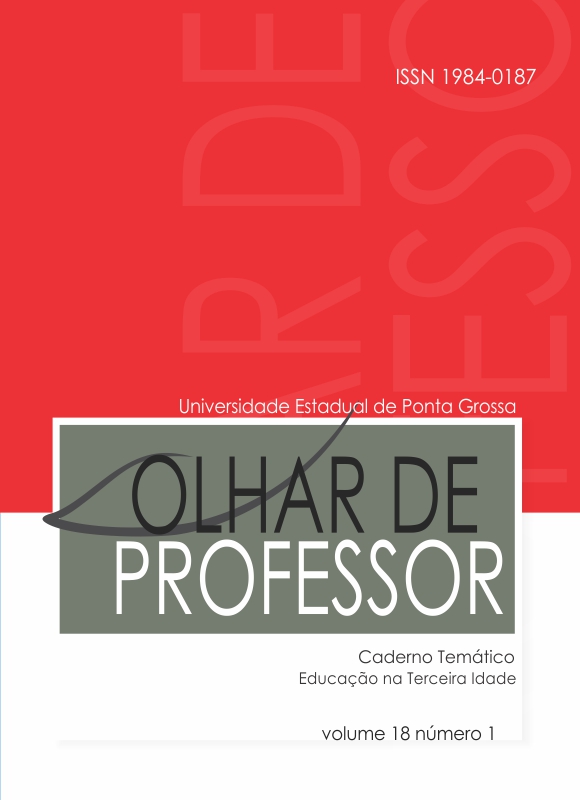A FOTOGRAFIA COMO ELEMENTO PEDAGÓGICO DE CONSTRUÇÃO E EXPRESSÃO DE CONHECIMENTOS NA TERCEIRA IDADE
Main Article Content
Abstract
diferenças cognitivas individuais trocando as letras pela imagem, sem prejuízos de comunicação de opiniões, convicções e sentimentos; e estimular a autoconfiança do idoso baseado em seu potencial de comunicar sua visão holística pela fotografia. Partindo do questionamento “Onde estou?” os idosos foram orientados a retratar suas práticas sociais em diferentes ângulos através da fotografia e depois
socializá-las em grupo comunicando suas percepções e aprendizagens. O método de abordagem foi o Dialético porque este atende práticas investigativas que analisam ambientes sociais em seus distintos aspectos e inter-relações. Os resultados apontam a ampliação da percepção dos idosos sobre o real, registrada em fotografias que comunicam o singular olhar reflexivo do idoso e seu potencial cognitivo,
ativo para avaliar e comunicar situações includentes ou excludentes de espaços e sujeitos sociais.
Downloads
Article Details
Authors who publish in this journal agree with the following terms:
a) Authors keep the copyrights and concede the right of its first publication to the magazine. The work piece must be simultaneously licensed on the Creative Commons Attribution License which allows the paper sharing, and preserves both the author identity and the right of first publication to this magazine.
b) Authors are authorized to assume additional contracts separately, to not-exclusively distribution of the paper version published in this magazine (e.g.: publish in institutional repository or as a book chapter), with the author identity recognition and its first publication in this magazine.
c) Authors are permitted and stimulated to publish and distribute their papers online (e.g.: in institutional repository or on their personal webpage), considering it can generate productive alterations, as well as increase the impact and the quotations of the published paper.
d) This journal provides public access to all its content, as this allows a greater visibility and reach of published articles and reviews. For more information on this approach, visit the Public Knowledge Project, a project that developed this system to improve the academic and public quality of the research, distributing OJS as well as other software to support the publication system of public access to academic sources.
e) The names and e-mail addresses on this site will be used exclusively for the purposes of the journal and are not available for other purposes.

This work is licensed under a Creative Commons Attribution 4.0 International License.





